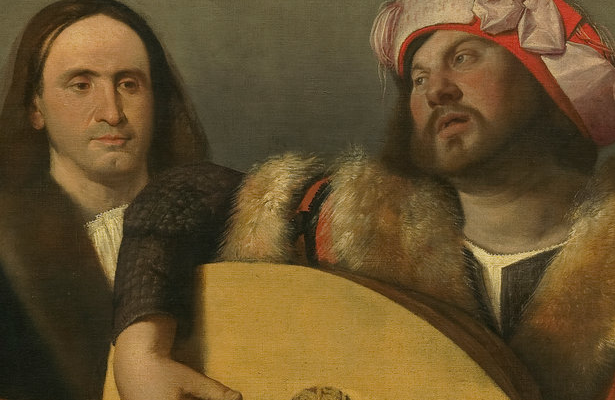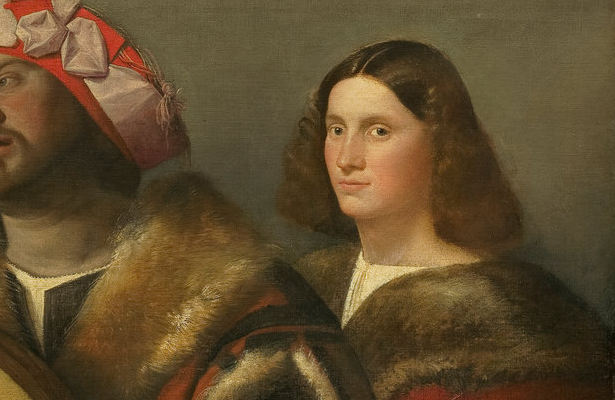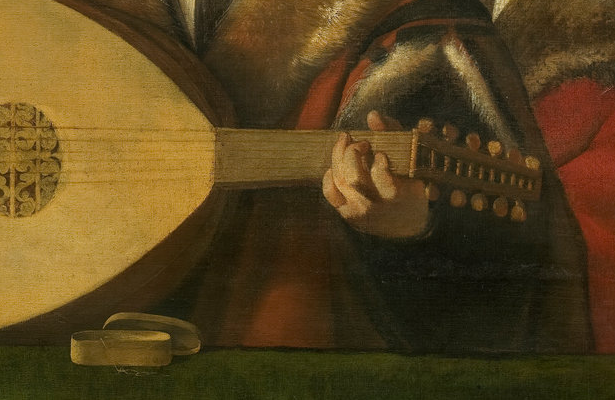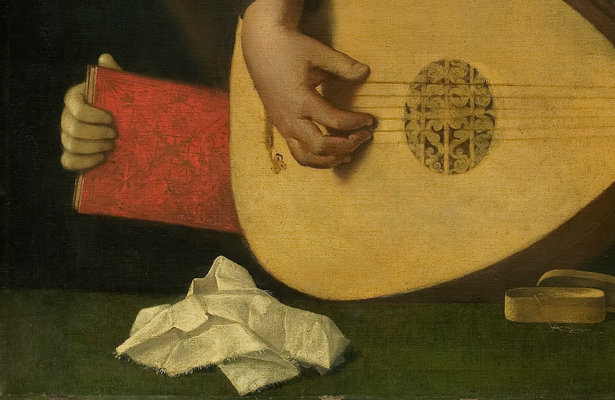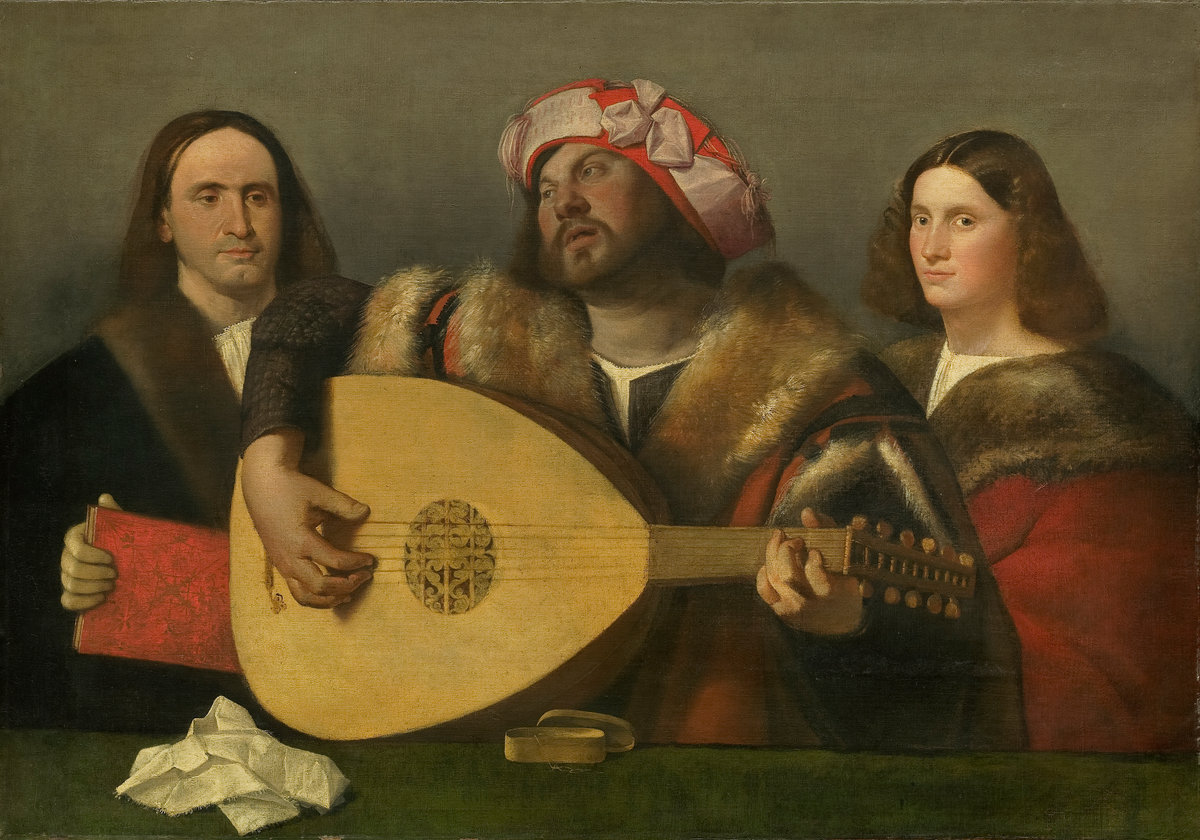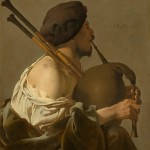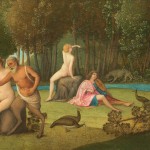Reproduced on the cover of the standard monograph on Cariani, A Concert is widely regarded as the artist’s masterpiece. The painting first came to light in the 1960s, when it was attributed to Cariani with a dating of c. 1519. Born c. 1485 near Bergamo, the westernmost of the Venetian mainland territories, Cariani was trained in Venice, first in Giovanni Bellini’s workshop and then among the circle of Giorgione. In Venice until 1517, he underwent further influences from Titian, Sebastiano del Piombo, and Palma Vecchio, the last of whom also came from Bergamo. Cariani returned to live in his native city twice, from 1517 to 1523 and again from 1528 to 1530; otherwise he was active in Venice until his death.
This pattern of alternating between the two artistic centers, one a sophisticated metropolitan capital and the other a provincial city with strong ties to Lombardy, is reflected in Cariani’s style, and nowhere more than in A Concert. The oblong composition, featuring a lute player and two companions shown half-length behind a ledge, derives from Giorgione, as do the two themes that Cariani combined in his painting: The subject of a young man with his teacher goes back to Giorgione’s Three Ages of Man, in the Pitti Gallery, Florence, and to the National Gallery’s own Giovanni Borgherini and His Tutor, from the artist’s studio, both dating from c. 1505 to 1510. Cariani united this theme with the even more popular one of music making, epitomized in Titian’s famous Concert in the Pitti Gallery. The warm color in Cariani’s picture–the green cloth draped over the ledge, the red garments and book, and, above all, the stunning red-and-pink hat worn by the musician, set off against a gray background–is also Venetian in origin.
Cariani interpreted his Venetian models in a highly realistic Lombard manner. The musician accurately strums the six-stringed lute; near him are a white handkerchief with which to wipe his hands and a small box containing a spare string. Like the musical instruments, the costumes, especially the fur-lined cloaks, are treated with the utmost attention to texture and detail. All three figures, to judge from their individualized features, must be portraits, although the sitters have yet to be identified. Most impressive is the corpulent musician. He bursts onto the scene, separating the tutor, who is shown holding a book on the left, from his aristocratic young pupil, who looks out at the viewer from the right. Cariani’s earthy realism gives the musician a humorous air: with his head cocked as if seeking inspiration, he is one of the great comic inventions of Italian Renaissance painting.







